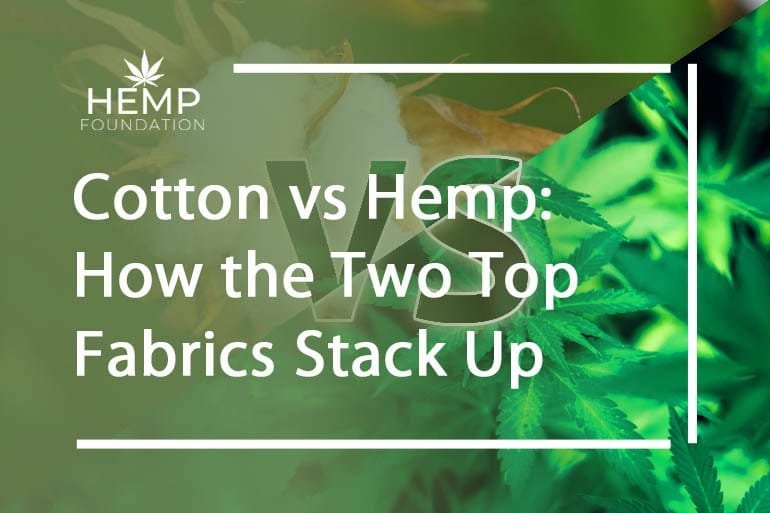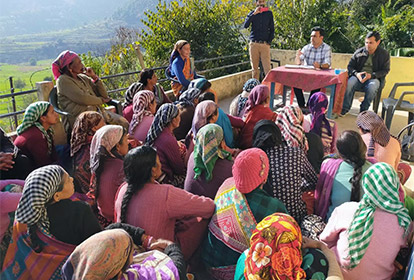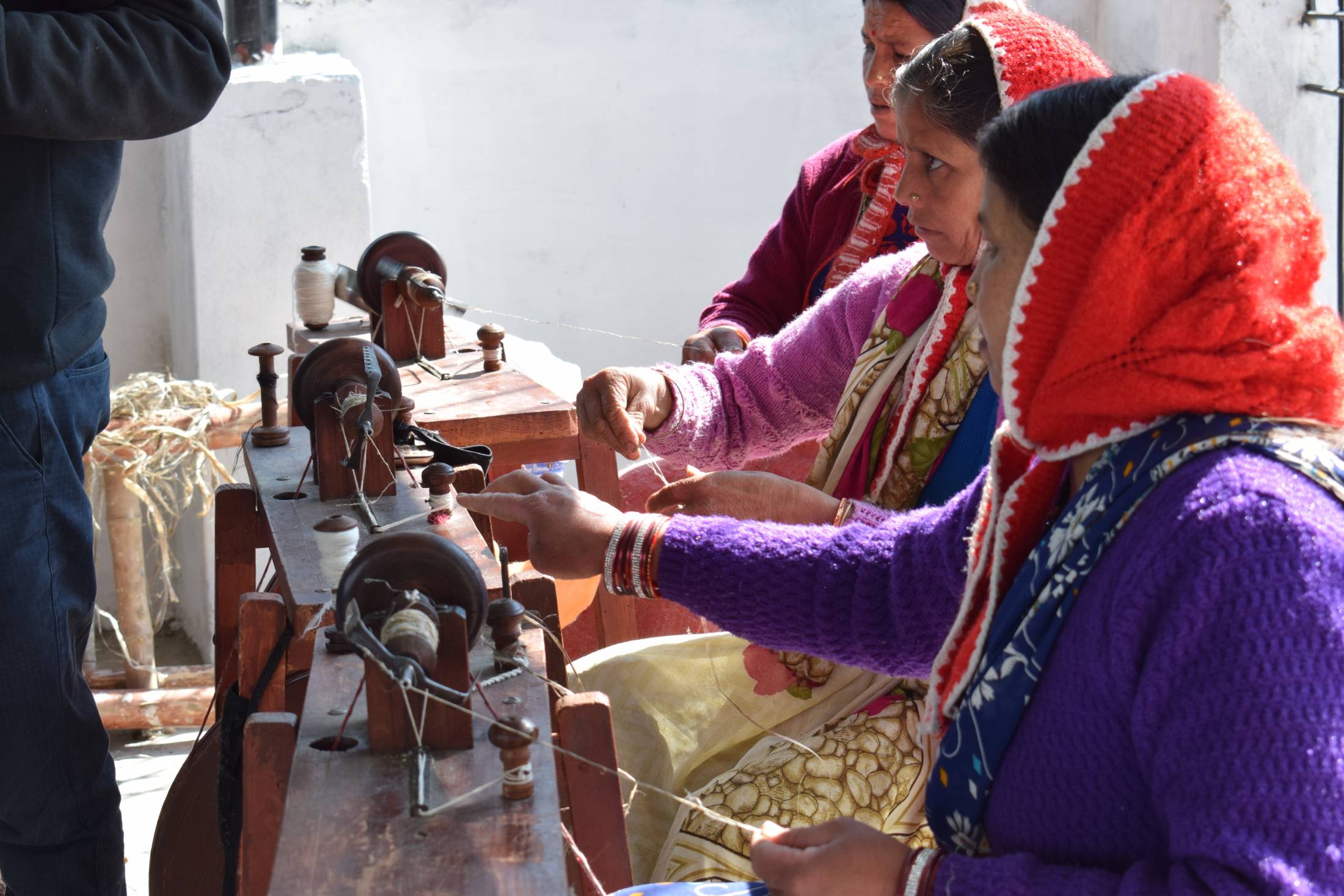Cotton vs Hemp: How the Two Top Fabrics Stack Up
How did it happen?
A marvel plant that could serve humanity immensely and held a solution to glaring problems across industries was banned and banished,
And nobody bats an eyelid!
Was it a conspiracy to promote the vested interests of some industrial corporations in the cotton trade?
Or a sheer misunderstanding,Or a paranoia towards its cousin!!!
It is Hemp if it hasn’t yet lighted upon you, a close relative of marijuana.
Hemp which does all the wonderful things except intoxicating people.
Now, when the world is slowly waking up to the marvels of hemp, let us examine what makes it a super-crop for humans and how it stacks up with cotton against several parameters.
Sustainability
Is Cotton, the perceived king of clothing fabrics friendly to the environment as well?How earnestly we want to approve of this!
Alas! it is not.
It may be soft, breathable and lightweight but has a huge negative environmental impact.
There are two major issues.
Do you know 2700 liters of water are needed to grow enough cotton to produce a t-shirt? Two, chemical dyes are heavily used for producing regular cotton.
Three, the fabric has become a victim of its success.
To meet the huge demand of cotton produce, farmers use heavy doses of chemical fertilizers and pesticides.
Cotton grown in the United States occupies 1% of the country’s farmland but consumes 50% of all pesticides.
And these poisonous chemicals end up in our rivers and underground water, creating severe health problems for all of us!
Enter organic cotton
Organic cotton walks in here presented as an eco-friendly alternative to traditional cotton.
Well, let us examine.
Organic cotton is grown using non-GMO seeds and without chemical fertilizers. Insects are used for pest control, in place of hazardous pesticides.
A clever soil rotation system is used for reducing the need for water.
Water-based dyes are used instead of bad chemicals.
To improve textile quality, harvesting is done by hands.
That far, quite well!
But, the question is, why hasn’t yet organic cotton replaced regular cotton?
For two reasons.
Organic cotton requires considerably more time than conventional cotton for every phase of production – growth, harvest, fabric manufacturing.
Organic cotton, thanks to a complex process, is more expensive as well.
Enters hemp
Now called a blessing for humanity, hemp is a fabric that deserves to be anointed, king.
Not convinced?
Here are a few facts.
Hemp grows really fast, taking just 3 to 4 months to reach maturity. Compared to the cotton plants, a single hemp plant generates 220% more fiber.
What is more, it takes very little water to grow and repels pets naturally. Hemp roots also benefit the soil, cushioning it from toxins and erosion.
Hemp even returns most of the nutrients back to the soil, thus helping in retaining soil quality.
Hemp is strong!
You may not believe but you will have to exert more pressure to crack and break the weakest hemp fiber compared to the weakest variety of steel!
Hemp carries this strength to the fabric. Moreover, hemp fabric is tailored for hot climates as it is very breathable and antibacterial.
You may ask then why isn’t hemp ruling the roost then.
Well, this is a long story that we have cut short here.
A glance at a few History Snippets
These shots from history will help you gather an idea about acceptance and consumption of hemp since the start of human civilization:
- Humans have been consuming hemp for centuries. According to Re-defining Environmental Harms: Green Criminology and the State of Canada’s Hemp Industry, a Canadian Journal of Criminology & Criminal Justice, hemp was spun into usable fiber 50,000 years ago.
- Dr. Uma Dhanabalan, a Masters in public health from Harvard University, reveals cannabis as one of the five essential plants mentioned in the Vedas.
- During the middle ages, hemp was an important crop of tremendous economic and social value.
- Ship-making was dependent on cannabis as hemp rope and oakum was three times stronger than cotton and resistant to saltwater.
- In the UK, in 1535 Henry VIII forced all landowners to sow hemp in 1/4 of an acre or be fined. Up to the 1920’s 80% of clothing was made from Hemp fabric.
- Hemp or flax paper was used exclusively for making schoolbooks until the 1880s. (Jack Frazier. Hemp Paper Reconsidered. 1974.)
- Founding fathers of America, including George Washington and Thomas Jefferson, grew hemp (Washington and Jefferson Diaries)
- Benjamin Franklin owned a paper mill, which produced hemp as well.
So When Did Hemp Turn Bad
It is amazing how a crop like hemp which has a multitude of advantages was banned and sidelined. Were some vested interests behind this development?
Did influential cotton, wood pulp paper and chemical industrialists feel their business threatened by versatile hemp and colluded to have hemp banned?
A thesis by John C. Lucien, a professor in Pepperdine University, stated –
“From 1935 on, the Bureau actively re-wrote the history of hemp by demonizing cannabis — triggered by monopolistic greed and economic insecurity of a few financially threatened industries.”Anti-hemp alliance of the big 3″
Here, he talks about the Federal Bureau of Narcotics (FBN) in America. Andrew Mellon, the contemporary Secretary of the Treasury, had business interests in DuPont, General Motors, and various oil companies. Andrew had gained a reputation for using his legislative influence to gain favor for the companies he had business interests in.
Mellon chose Harry J. Anslingerone of his relatives to head the FBN and no surprise, he was quick in imposing restrictions on hemp. The Bureau drafted the Marihuana Tax Act and brought cannabis under the control of the Treasury Department. The restrictions were later stretched to prohibition on hemp cultivation.
A prominent personality in the anti-cannabis lobby was William Randolph Hearst, publisher of the nation’s largest newspaper chain. Hearst worked with Harry J. Anslinger to ban hemp as the growing hemp industry posed a threat to his major investment in the paper milling industry.
Propelled by an earnest desire to advance their selfish interests, this lobby disseminated continual negative market propaganda against cannabis to demonize hemp and eradicate any chances of the crop making a comeback. A number of social, economic, and individual problems were attributed to hemp to cast it in black.
Can a cartel be more potent than the one comprising the Secretary of the Treasury, the head of the FBN, and the owner of 20 daily newspapers and 11 Sunday papers?How the lobby continued anti-hemp momentum The campaign against hemp was strong and the cotton-petroleum-forest owner lobby continued the momentum even when the cartel was no more there.
For the several decades that followed, hemp was nowhere in the picture. A time came when hemp fibers constituted around .15% of the world’s textiles, in contrast to the cotton’s25 to 40%.
In recent years, as the world woke up to the enormous advantages of hemp, it slowly staged a comeback. In 2019, the global industrial hemp market size was pegged at USD 4.71 billion. Between 2020-2027, hemp is expected to garner a revenue-based CAGR of 15.8%.
Cotton vis-à-vis Hemp
Here is aninfographic that reveals how both the crops stack up:
| Cotton | Hemp |
|---|---|
|
|
|
|
|
|
|
|
|
|
|
|
Usability
Here is aninfographic that reveals how both the crops stack up:
| Cotton | Hemp |
|---|---|
Cotton is basically used for making:
|
Hemp has seemingly numerous uses. Industrial hemp has three major crops – oil, seed, and fiber.
Various parts of plants can be used as
|
Production
Cotton – producing too little while consuming too much
India is the world’s largest cultivator of cotton (slightly ahead of China now) with production pegged at 29 million bales in the 2019-20 season.
The numbers may look impressive, but if you dig into the data a bit, you will find that the productivity per hectare is starkly low. The average production of cotton is around 500 pounds per acre.
The data indicates higher land usage, yet a lower income for farmers.Hemp – almost three times of cotton per acre China is the world’s largest hemp producer, growing more than half of the planet’s supply. In 2018, media reports suggested the sale of $1.2 billion.
Hemp production is around 1500 pounds of fiber per acre.
Fiber Properties
| Cotton | Hemp |
|---|---|
|
|
|
|
|
Bt Cotton
Touted to be a game-changer, Bt cotton has actually exacerbated the problem in agronomy of many countries it was introduced to. Let us take the case of India.
Introduction of Bt cotton seeds in 2005made production soar at the start, enabling the country to export between 600,000 tons and 1.5 million tons of raw cotton each year after 2005.
In 2011, GM cotton crop was produced in 10.6 million hectares. How Bt cotton seeds work
If you don’t yet know how Bt cotton seeds work, here is a brief. The genetically modified Bt cotton seeds have genes from the soil bacterium Bacillus thuringiensis, which are toxic to bollworm caterpillars, the main cotton pest.
Bollworms wreaked havoc again
However, issues cropped up a few years after introducing the seeds. The bollworm gradually grew tolerant of the genes. The situation became so grave that many farmers lost almost all of their investments.
In many Indian Bt cotton fields, if you just walk through and split a few cotton bolls, you can see the havoc unleashed by pink bollworms, which have now become resistant to the genetically modified cotton varieties.
Here is a news report which shows GM has failed to deal with pests in India. The report attributed the productivity gains to changes in insecticides and fertilization, not to Bt cotton adoption.
Farmers clueless about the suitable seeds
Bt cotton seeds of numerous varieties have hit the market. Most farmers working in the fields are clueless which of these seeds will suit the soil in their fields.
What is worse, even fake seeds are available and farmers get puzzled when they see their crops getting ruined. The poor guys are under the impression they are using cotton seeds.
After a few years of euphoria, the farmers and even some proponents of Bt cotton are now realizing all it has done is to make peasants dependent on multinational corporations.
Bt cotton pushed up fertilizer and water usage
The Council for Social Development (CSD) conducted a study on Bt cotton in India, which revealed that Bt cotton has considerably pushed up already high fertilizer and water usage, taking up the input costs. The average consumption of fertilizers propelled up from 95 kg/hectare in the pre-Bt cotton period (1996-2001) to 120 kg/hectare in the post-Bt cotton period (2002-2008).
Bt has also made cotton even more water-intensive. Peasants who irrigated their crop three times in a cycle before Bt was introduced, now irrigate their crop five times. The average irrigation costs per hectare jostled up from INR 355 per hectare in the pre-Bt cotton period to INR 813 in post-Bt cotton period.
US anthropologist Glenn Stone points out that Indian farmers are on a seed and pesticide treadmill, which lies at the core of the problem.
How cotton became a victim of its own success
Cotton also became a victim of its own success. Buoyed by the success of cotton as a cash crop, many farmers sowed cotton continuously in their fields rather than rotating the crops. This approach badly hit the fertility of the soil.
Moreover, if cotton is cultivated inland in continual crops with no second crop in between, bollworms tend to develop resistance to protein, threatening to kill the whole investment of the cultivator.
Labor is the highest input cost (53%) in Bt-cotton production. The other heads are fertilizers (10.84%), seed (9.61%), and mechanization (8.86%).
Hemp vs Bt Cotton
Hemp has come across as a life changer for thousands of poor women and their families in remote areas of Uttarakhand and many other areas where it is sown. Scores of villages that were abandoned by people in search of livelihood have now regained life.
Poor, hardworking women who were left to fend for themselves once their husbands went away on the trail of work are now connected to the global economy and are sowing the reaps.
Hemp harvesting has visibly raised their quality of life and they have now a say in their homes as well, thanks to their active contribution to economy.
Processing
The environmental impact of cotton vs hemp will be clear only when we include processing in the story.
| Cotton | Hemp |
|---|---|
|
|
|
|
|
|
|
|
|
Hear the Call of Mother Planet
It is time to knock the environmentally hazardous cotton off its throne and make hemp the fabric of our future. The earth, the planet we all live in and breathe, is calling for help. We need to hurry up, crush the outcome of one of the most diabolical conspiracies of all time, and restore hemp at the top of the family of fabrics.
We owe it to the earth, isn’t it?





